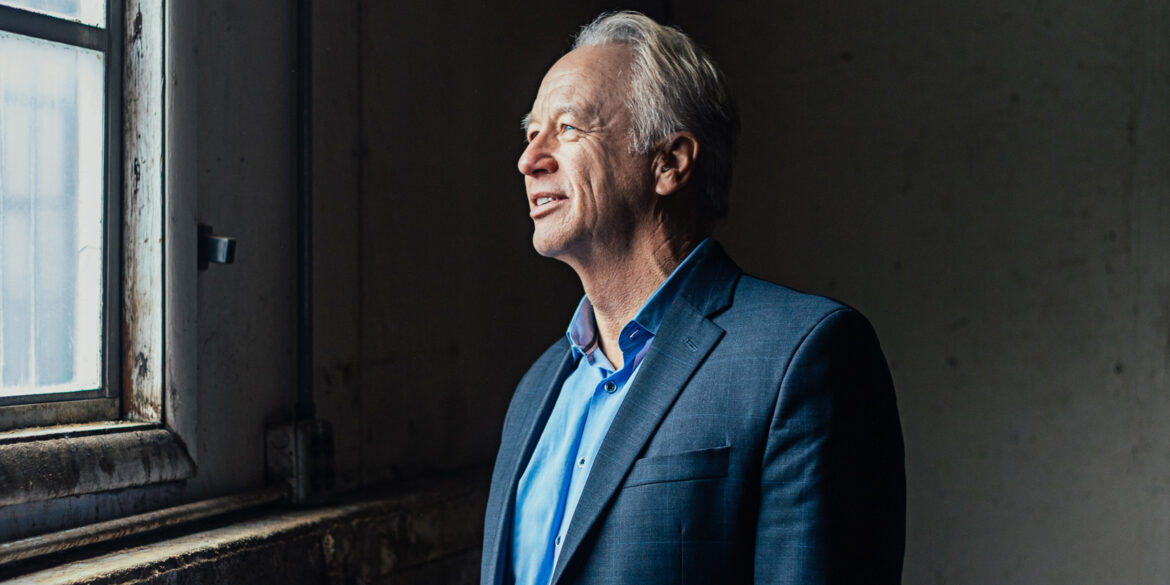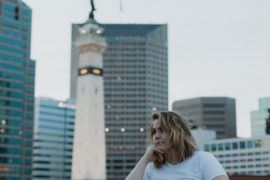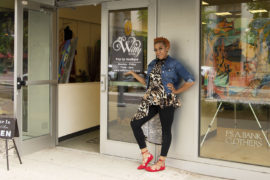This cover story is presented by Life in Indy. From exploring Indy’s top attractions to connecting with leading employers, Life in Indy is the go-to resource on all things central Indiana. Visit the Life in Indy website for a virtual tour experience and explore our community!
This month’s cover story subject, Brian Payne, is a master connector. Growing up in theater, Payne learned early to appreciate creativity and the impact of artistically talented people coming together to create. While he did not pursue acting as a career, he has spent his professional life advocating and supporting culture and arts using the very skills that he learned in theater—teamwork, consensus building, flexibility, and the ability to dream big. A storyteller and a visionary, Payne, who is retiring from his position as President and CEO of Central Indiana Community Foundation (CICF) and President of The Indianapolis Foundation, will be leaving some pretty big shoes for someone to fill. I chatted with Payne about CICF and The Indianapolis Foundation’s racial equity work, how we can take Hoosier hospitality to the next level, and the current state of arts and culture in Central Indiana.
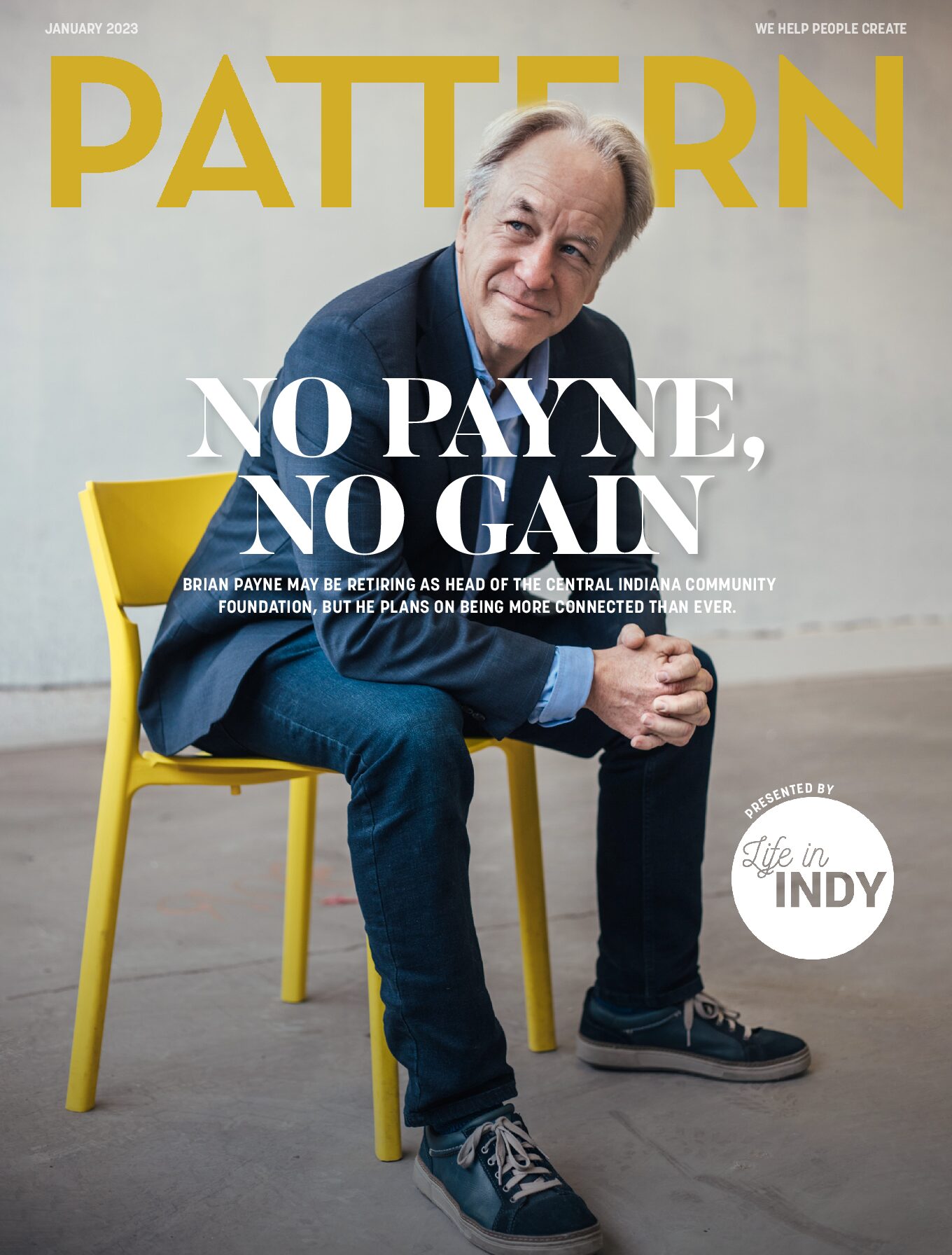
Polina Osherov: Brian! Retirement. What are you gonna do?
Brian Payne: Someone told me, “Don’t call it retirement, just refer to it as owning your own time.” I don’t think that’s very poetic. [laughs]
I’m actually talking to a local university about creating a leadership program for students. There’s all this talk about, how do we get younger people, their creativity and their expression and their cultural DNA into leadership positions?
I have also enjoyed helping other community foundation CEOs think through their racial equity journeys. CICF is two or three years ahead of most community foundations, and we’ve gone deeper than most, so I’ve spoken at conferences and people have asked me for advice, wanting to learn from our successes and mistakes. So that type of consulting work is really appealing as well.
PO: What’s the most common question you get asked about CICF’s racial equity journey?
BP: People are surprised as I was about how that journey gets so challenging internally. I knew that when we went public with our new mission it would be hard and we would face all kinds of reactions. And we did. We lost some donors, but also gained new ones who are better aligned, so that worked out just fine. But it turned out that getting our internal team on the same page was the hardest to accomplish. And that seems to be pretty universal, especially for community foundations. There’s a lot of confusion around, “Are we a racial justice organization now, or are we still a community foundation?” We actually asked ourselves that question along the way and decided that CICF is a community foundation that cares deeply about racial equity and dismantling systemic racism, but that doesn’t mean we’re an activist organization. Those are two very different roles.
PO: We got a glimpse of that here as well. We were challenged a couple of times on the nature of racial equity work that we’re doing at PATTERN. And it took me a little bit to figure out what was being asked of us. I absolutely admit to being thoroughly confused at first. Once I wrapped my brain around it and had discussions about it with our staff and Board, it was pretty clear to us that while PATTERN absolutely stands for diversity and inclusion, we are not an anti-racism activist organization. Our mission is to support and provide opportunities and support to all emerging creatives and to advocate for the growth of the creative economy. If we help dismantle some of the systems of racism along the way, amazing!
BP: Right, right. It’s tricky. Racial equity is definitely part of our mission, but we also have to run a billion-dollar foundation that’s 106 years old. We’ve done a lot in six years, but there are decades more to be done. It’s going to take time. I get why people are impatient. But being impatient and just demanding an instant transformation in society is unrealistic.
In our effort to really lean into racial equity, we hired a bunch of activists and they were quite unhappy with how we wanted to approach the work. Activists, more or less, want to blow things up, including your own organization, so that was definitely a challenge to try and figure out – how to balance the desire for change with the understanding that destroying everything is not the answer.
PO: That makes sense. It takes time to separate the bad from the good, not to mention that blowing everything up in no way guarantees a better outcome.
BP: I do understand why people are angry about the state of things, like, enough is enough. But thinking about all this strategically with long-term impact in mind is how we’ve chosen to approach this issue and it feels like the appropriate way for us to handle something of this importance and magnitude.
PO: What does the word “community” mean to you?
BP: To me, community is all about connectedness. Community is connecting to people beyond yourself, beyond your three or four closest friends, beyond your family; connecting to something greater than yourself. That is what community is. And I think we do that really well here. The reason why I like Indianapolis so much is because there’s such a strong sense of community.
PO: This quality of connection and connectedness is part of the Hoosier ethos. Indiana was recently described by Startup Genome’s Global Startup Ecosystem Report (GSER) as having a high degree of local connectedness, something we likely refer to as Hoosier hospitality. This has been a boon for startups and entrepreneurs, but do you see a role that our enhanced connectivity and access can have in addressing racial inequity?
BP: The Hoosier hospitality mindset definitely makes it easier to get plugged in here than many other places, but I think we can do even better. I’d love to encourage people to be more intentional about going places they don’t normally go, and seeking out interactions with people from social, and racial backgrounds different from their own. That’s harder to do than it sounds, so with that in mind we (The Indianapolis Foundation) just launched an online platform called the Movement of 10,000 (MVMT10K) that’s designed to inspire equitable change in the community by connecting people that want to learn, and share perspectives.
PO: Do you have a personal story of being in a space where you were the minority?
BP: Going to my friend, Reggie Jones’ memorial service, is one instance that pops into my mind. I think I was one of three white people in a room with hundreds of people. At that point, I was comfortable with being in the minority, but when I started on this journey of going outside my normal spaces, it wasn’t very easy at all. I’m grateful that I’ve learned to be very comfortable in non-white spaces. Beyond that, I have learned a ton from being in those spaces. I’ve made friends in those spaces that are very meaningful to me. I’m a better thinker, I’m a better connector, I’m a better person. My life is richer because I’ve done that.
PO: Getting out of our silos while challenging is the more interesting—and also more rewarding—way to exist. It’s one of the reasons I’ve loved the PATTERN project so much. From the very beginning, this idea of a fashion community, a creative community, attracted the most diverse and interesting group of people in the city. PATTERN was authentically diverse from the get-go by virtue of having art, design and culture at the heart of our mission.
BP: Yes! Throw a bunch of creative humans together of all types and races and gender identities and you get magic. You get something that’s bigger and better than all the silos that we have.
At the same time, I do think it’s important to intentionally create space and opportunities for non-white communities to thrive. For example, one of my goals once I retire is to bring to fruition this idea that’s been in the making for a long time which is supporting the launch of a Black professional union resident theater company that is founded by a Black theater producing artist. An arts colleague believes that by doing that I am supporting silos instead of trying to get rid of them. Why don’t we just have theater companies that are Black and White and Brown? And why would we have a Black theater company? But I don’t see this as creating silos. I just think that asking Black people to always mix into White-run organizations doesn’t seem fair. And I think having a powerful, well-resourced Black theater company gives Black artists a chance to tell their own stories in the way they want to tell them, while at the same time providing them a professional foundation that opens the door to the broader theater world at large.
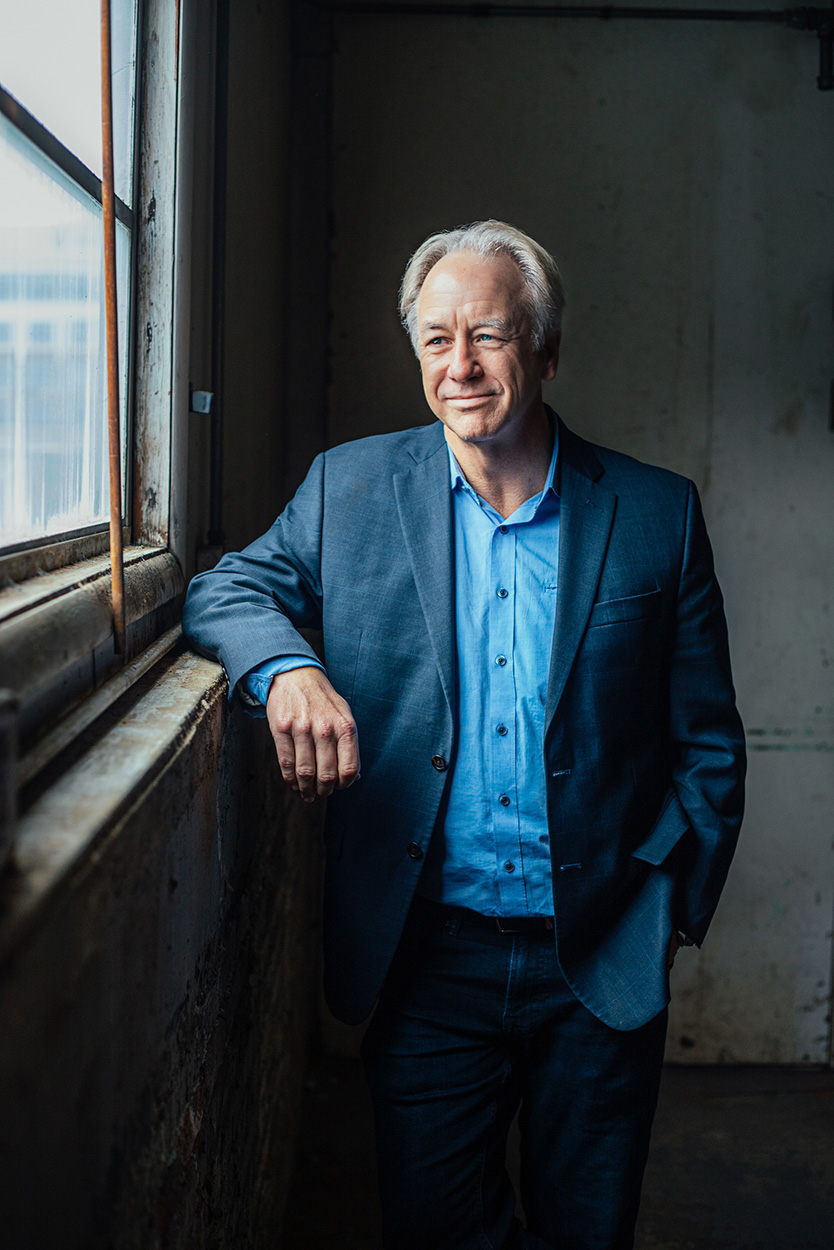
PO: As you look ahead and take stock of Arts and Culture in Central Indiana going into 2023, what are your thoughts about what you’re seeing? Are you feeling optimistic?
BP: I believe that we’re in a better place right now than in the entire 29 years I’ve lived here. I am optimistic. It feels as though we’re on the precipice of something important and exciting, but it will require a leap of faith to fully embrace what’s possible. We’ve taken some leaps before, but this feels like a particularly important moment, and I’m worried that if we don’t do it now we will lose a bunch of people who have otherwise stuck around to try and make a difference, including me.
PO: So what does that look like? What’s the leap? Because I agree with you. We’ve done some really cool things here, but at the same time, looking back at the last decade and a half, it’s been two steps forward, one step back. And we just need to keep going. We need to stop backing away from the commitment to the creative sector. And we need more champions of Arts and Culture like yourself, which is why I’m a little nervous about you retiring. I’m sure I’m not alone.
BP: People are a little nervous because the Foundation might hire someone that doesn’t really care about the arts. You can run a community foundation and focus on a lot of things that are mission-related without having to care about the arts. I do hope whoever they hire will have a commitment to the arts. Because selfishly, I want Indianapolis to remain my home base, and it won’t if there’s not a thriving and equitable cultural and arts scene here.
PO: My observation is that we just don’t seem to have a terribly fertile soil for arts, culture, design, music, etc, here, because it certainly isn’t a lack of talent, or interest, or attempts to build cool things here. And what I mean is that the ecosystem for making a great living while using your creative talents, or growing companies that are based on creative output, and dedicated to creative expression doesn’t really exist. We need to think about creating clear and well-supported pathways to economic success in this sector just as we have in other key industries. The soil needs to be fertilized, and for an extended period of time! These three-to-five-year cycles of art and culture-focused investments are not long enough.
BP: I love your analogy, and I agree. Thoughtful investment is the fertilizer, and it is needed over a long period of time. We do tend to run in five-year cycles, the thought process being, “Oh, we did all this good stuff over here, now let’s spread the love and invest in something else.” But that clearly hasn’t worked out too well because we never manage to get to critical mass and over the hump where this sector grows up and becomes fully self-sustaining.
PO: I would also argue that as a region, arts and culture is the missing brand pillar that we need in order to get past the ongoing identity crisis that we seem to be having. We’ve got sports, we’ve got tech, we’ve got life-sciences, we’ve got logistics and advanced manufacturing, we’ve got the best airport in North America, we’ve got a great Downtown, We’ve got great colleges and Universities, we’ve got excellent quality of life, people like us. All we need is something beautiful and fun to tie it all together, and an environment that makes creative people and companies want to move here. We don’t get that without investing in creatives the same way we do in other industries.
BP: I agree and I think it’s time to figure out how we can take the success of the sports strategy and lessons learned and apply those to supporting an inclusive and equitable Arts and Culture community. I believe that Arts and Culture could be a really strong brand for us, as good as sports, maybe even better, but that doesn’t happen without a comprehensive strategy.
PO: Some of the positive outcomes of this intentional investment in sports was that entities like NCAA and USA Olympics made Indianapolis their home base. Also, the City now attracts high-value events like the Super Bowl, Big Ten championships and All-Star games. As a result, sports went from being an expense to a revenue generator. It took time for this to happen, but it paid off many times over. We should do the same for arts and culture.
BP: Not to mention that creativity that comes from arts and culture can bring new ideas to more traditional sectors and help accelerate innovation. And of course, my dream is to see Black culture thrive and to see Central Indiana become the most inclusive and anti-racist region in the nation.
PO: Amen! So there it is, Brian! We’ve figured out what you’re going to do with all that time you’re going to own, starting July 1!
BP: Exactly. There you go!
[laughter]

